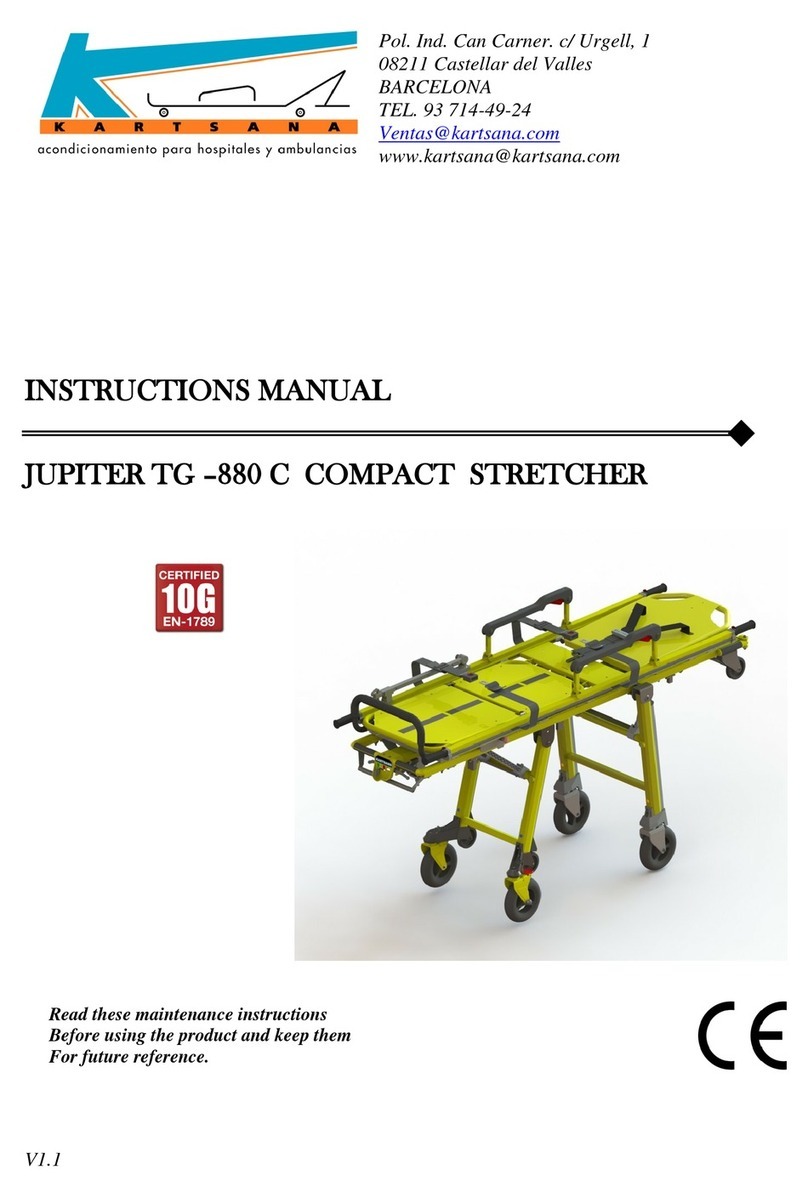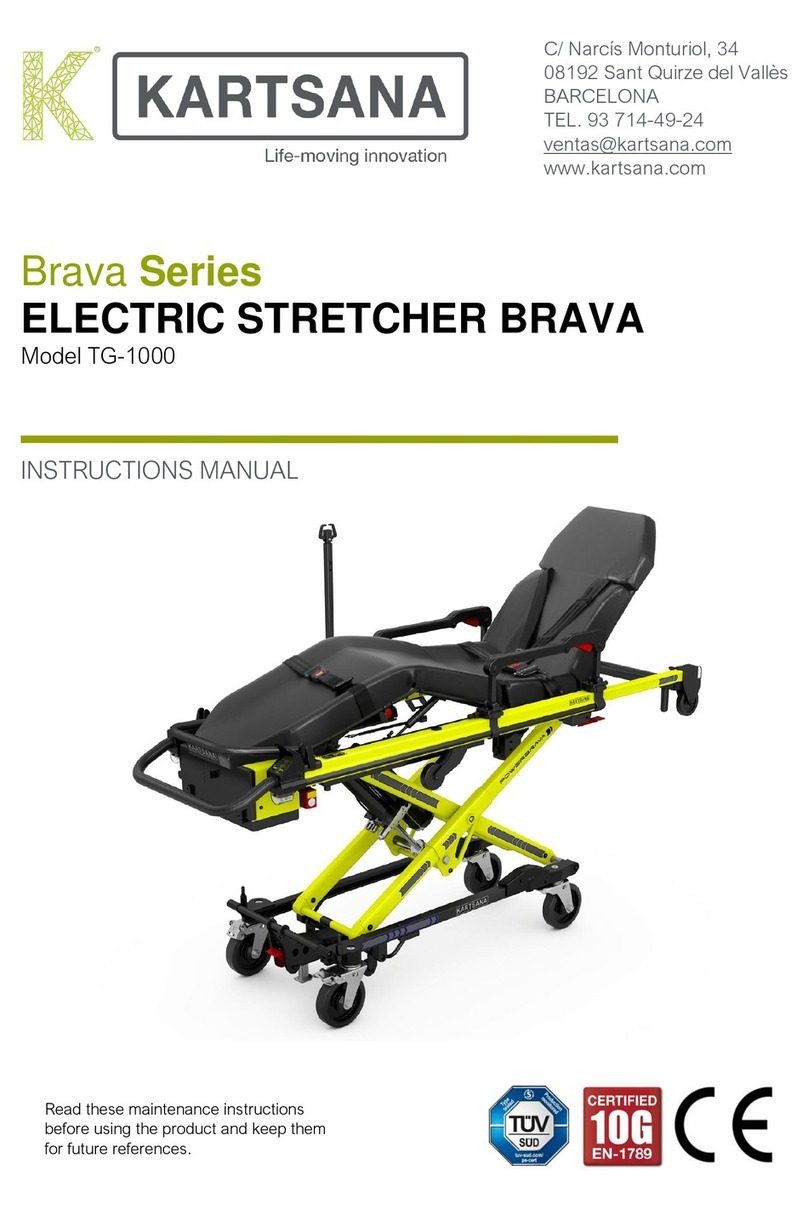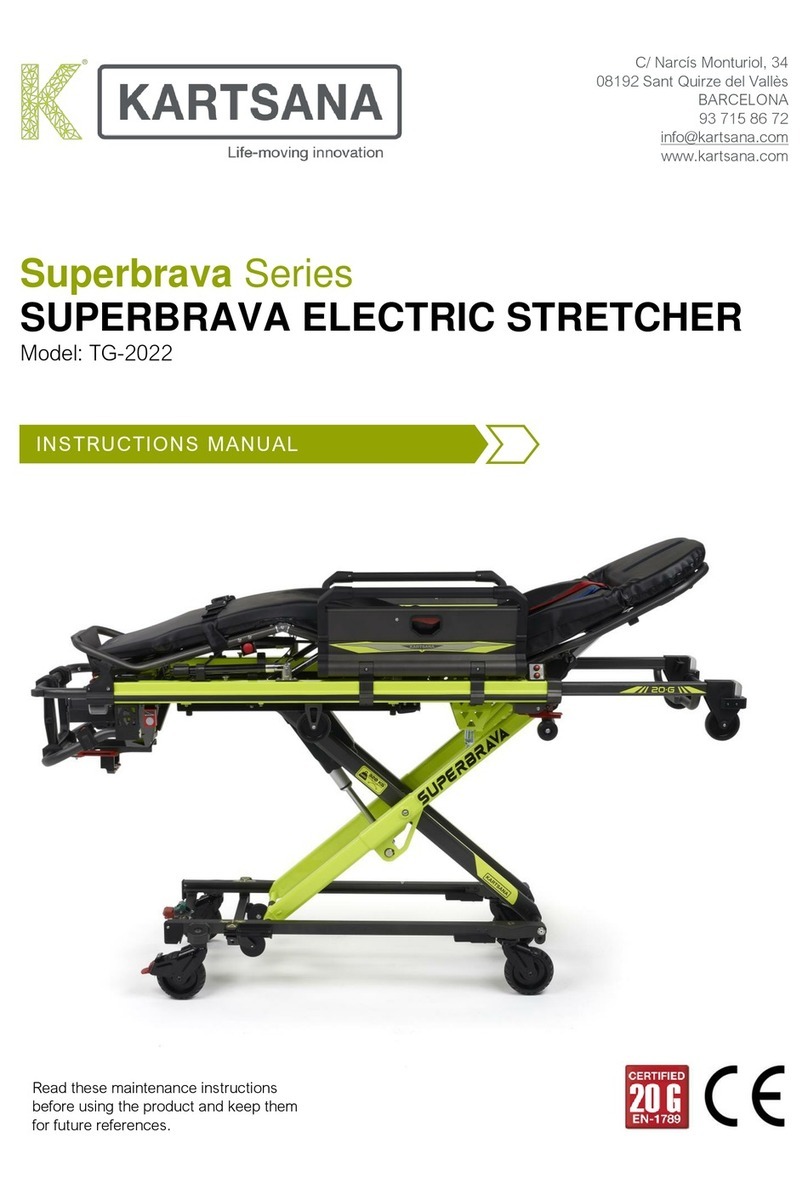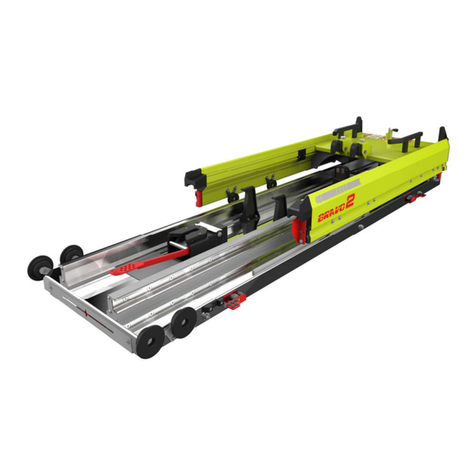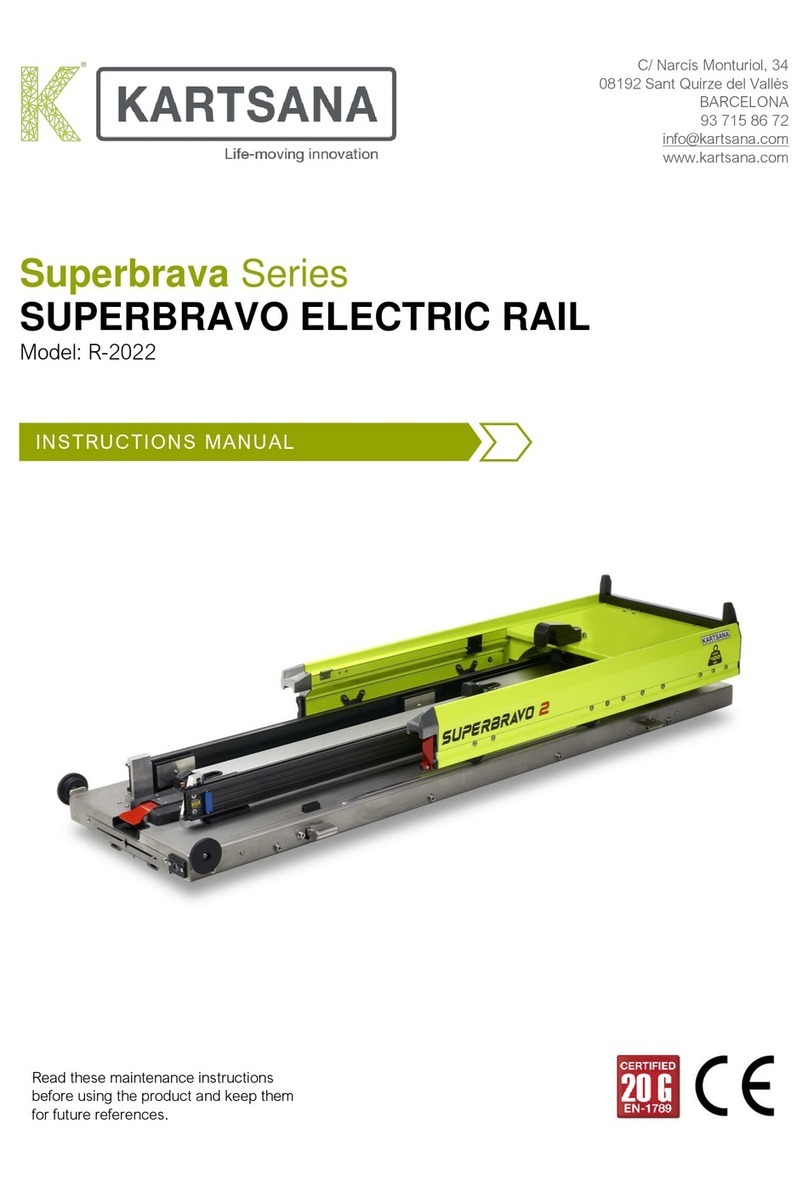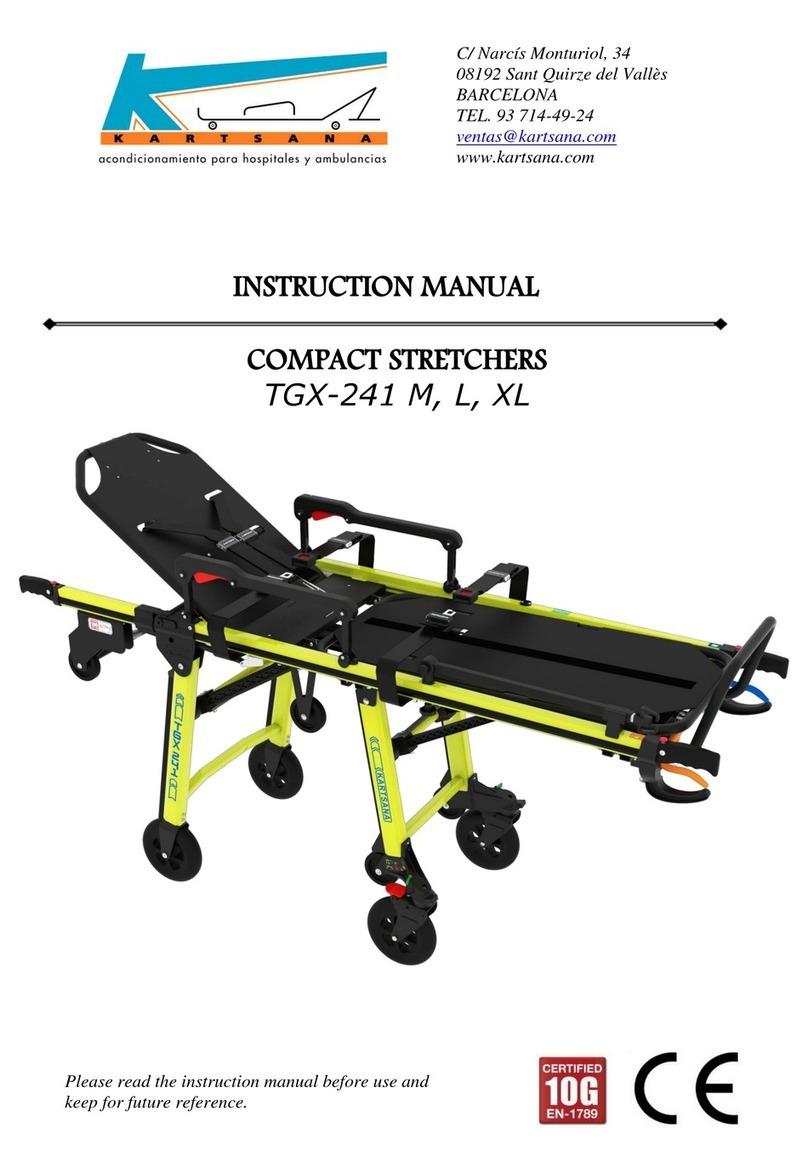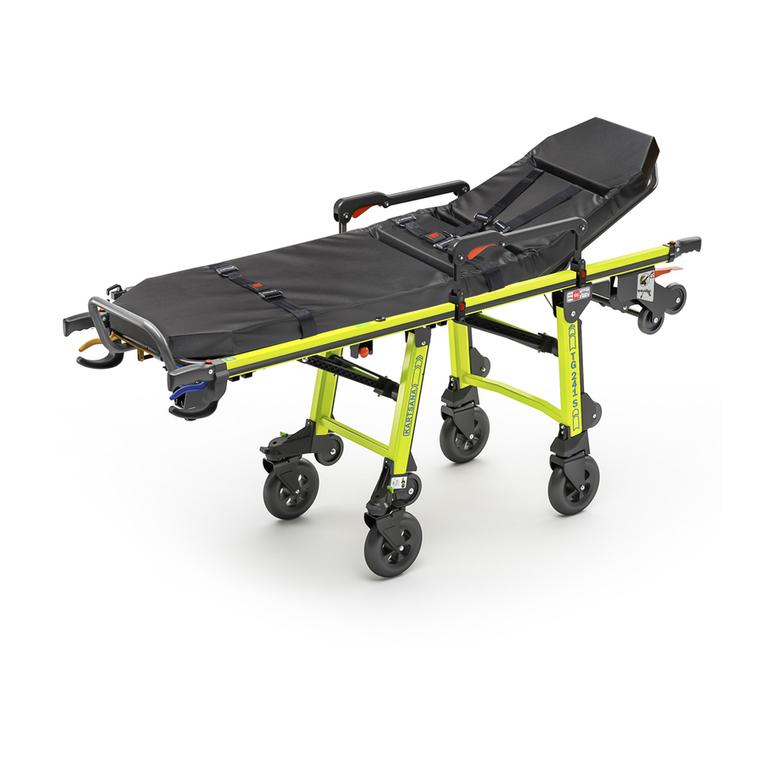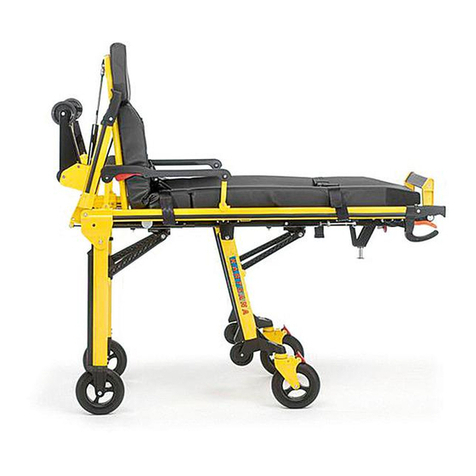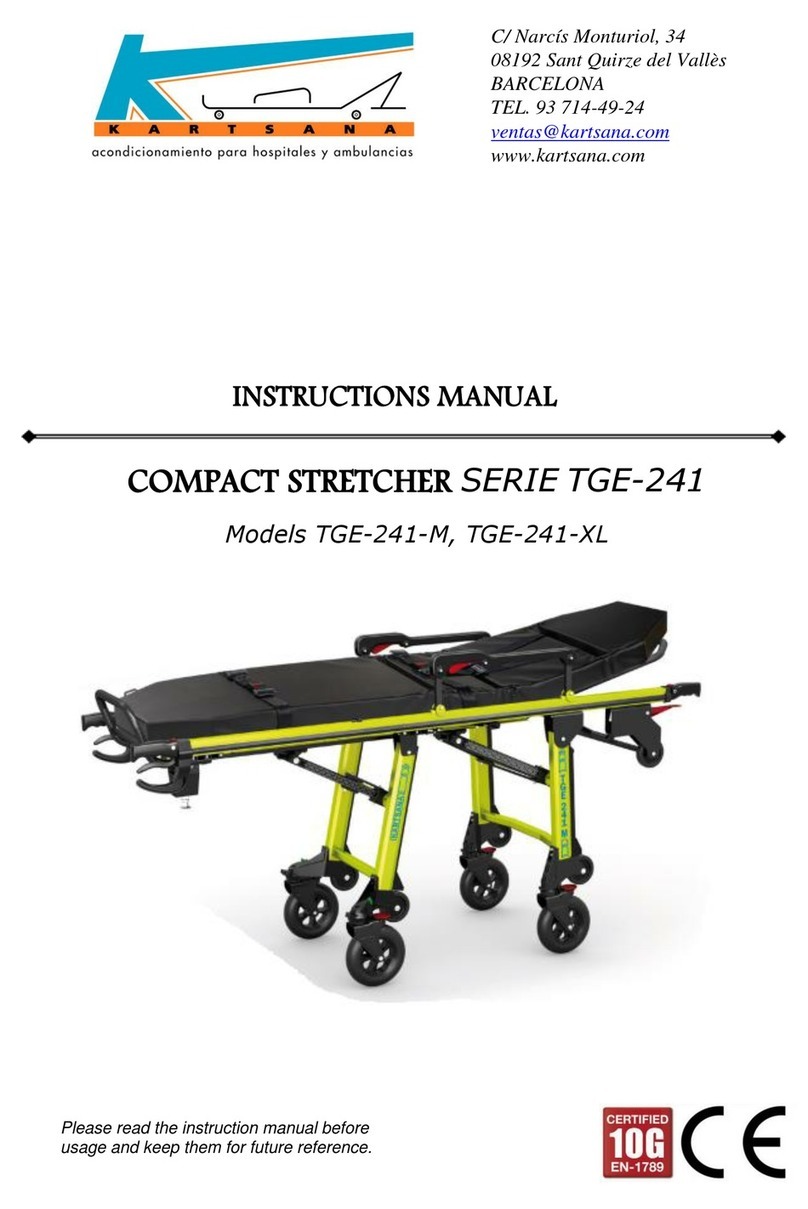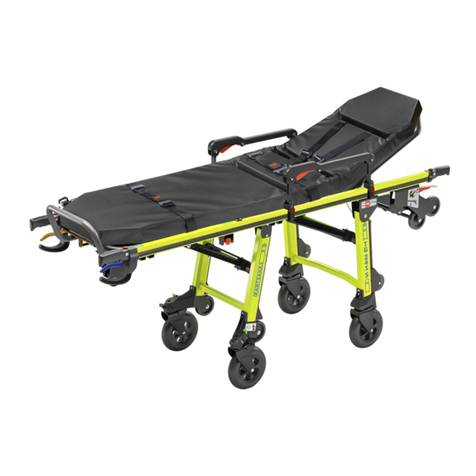
OPERATING AND HANDLING
SILVER STRETCHER
6
Rev.4
28.11.22
-Do not allow untrained assistants to assist in the operation of the stretcher. Untrained technicians/assistants can cause injury to the
patient or themselves.
- Do not ride on the base of the stretcher. Damage to the product could occur, resulting in injury to the patient or operator.
- Transporting the stretcher sideways can cause the stretcher to tip, resulting in possible damage to the product and/or injury to the patient
or operator. Transporting the stretcher in a lowered position, head, or foot end first, minimizes the potential of a stretcher tip.
- Grasping the stretcher improperly can cause injury. Keep hands, fingers and feet away from moving parts. To avoid injury, use extreme
caution when placing your hands and feet near the base tubes while raising and lowering the stretcher.
- Always use all restraint straps to secure the patient on the stretcher. An unrestrained patient may fall from the stretcher and be injured.
- Never leave a patient unattended on the stretcher or injury could result. Hold the stretcher securely while a patient is on the product.
- Never apply the optional wheel lock(s) while a patient is on the stretcher. Tipping could occur if the stretcher is moved while the wheel
lock is applied, resulting in injury to the patient or operator and/or damage to the stretcher.
- Siderails are not intended to serve as a patient restraint device.
- Hydraulically raising or lowering the stretcher may temporarily affect electronic patient monitoring equipment. For best results, patient
monitoring should be conducted when the stretcher is idle.
- High obstacles such as curbing, steps or rough terrain can cause the stretcher to tip, possibly causing injury to the patient or operator.
- The SILVER TG-1100 stretcher is designed to be compatible with R-1100 rail and is operator responsibility that these products work
together.
- Transporting the stretcher in lower positions reduces the potential of a stretcher tip. If possible, obtain additional assistance or take an
alternate route.
- Two operators must be present when the stretcher is occupied.
- Operators must be able to lift the total weight of the patient, stretcher, and any items on the stretcher.
- Never install or use a wheel lock on a stretcher with excessively worn wheels. Installing or using a wheel lock on a wheel with less than a
160mm diameter could compromise the holding ability of the wheel lock, possibly resulting in injury to the patient or operator and/or
damage to the stretcher or other equipment.
- When cleaning, use any appropriate personal safety equipment (goggles, respirator, etc.) to avoid the risk of inhaling contagion.
- Some cleaning products are corrosive in nature and may cause damage to the product if used improperly. If the products described
above are used to clean Kartsana equipment, measures must be taken to ensure the stretchers are wiped with clean water and thoroughly
dried following cleaning. Failure to properly rinse and dry the stretchers will leave a corrosive residue on the surface of the stretchers,
possibly causing premature corrosion of critical components.
- Failure to properly clean or dispose of contaminated mattress or other stretcher components will increase the risk of bloodborne
pathogens and may cause injury to the patient or operator.
- Escaping fluid under pressure can penetrate the skin causing serious injury. Avoid the hazard by relieving pressure before disconnecting
hydraulic or other lines. Tighten all connections before applying pressure. If an accident occurs, see a doctor immediately. Any fluid
injected into the skin must be surgically removed within a few hours or gangrene may result. Doctors unfamiliar with this type of injury
should reference a knowledgeable medical source.
- To avoid the risk of injury, do not use bare hands to check for hydraulic leaks.
- Take special precautions regarding electromagnetic compatibility (EMC) when using medical electrical equipment like Silver TG-1100
stretcher. Portable and mobile RF communications equipment can affect the function of the stretcher.
- The use of accessories, transducers and cables other than those specified, with the exception of transducers and cables sold by
Kartsana as replacement parts for internal components may result in increased emissions or decreased immunity of the TG-1100 SILVER
stretcher.
CAUTIONS:
- Changes or modifications to the unit not expressly approved by Kartsana could void the user’s authority to operate the system.
- The stretcher can be set at any stretcher load height position. Establish the required stretcher load height before placing the stretcher into
service
- Set the stretcher load height to the proper stop height prior to operation.
